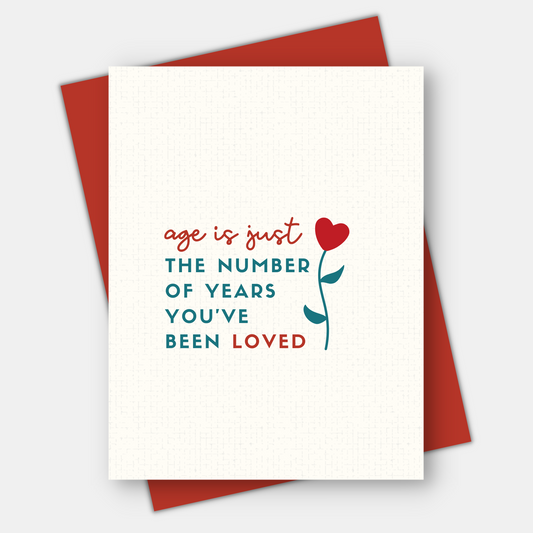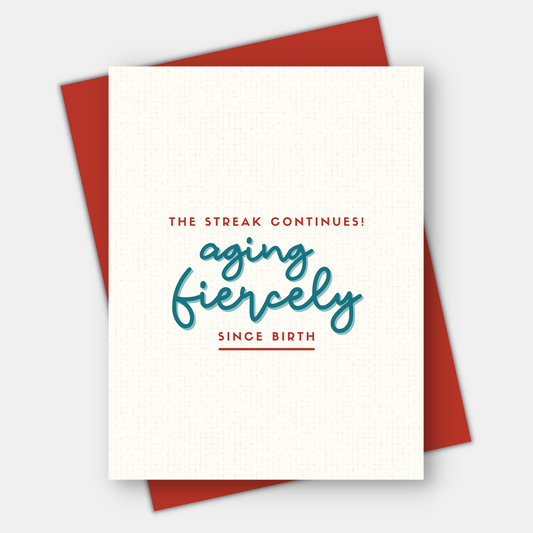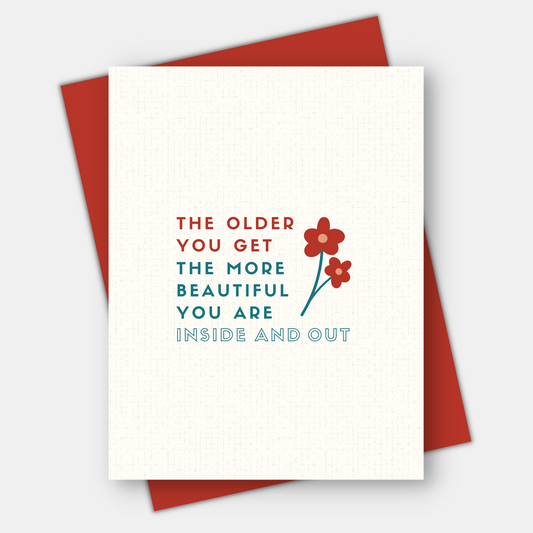Once a year, if we’re lucky, we become one chronological year older. It’s a time of reflection, celebration, and if we’re unlucky, we receive an ageist birthday card or two.
Birthdays have traditionally been the perfect time to take cheap shots at our friends and family about getting older, courtesy of the clever birthday cards produced by greeting card companies.
Birthdays are also the perfect time to recognize and discuss the harmful impacts of ageism.
Ageism is any judgment on the basis of age, whether directed at people older than us, younger than us, or our own selves (internalized ageism). When directed at older people, it often involves assumptions that older people are less competent, capable, and attractive.
It’s not hard to feel old in a culture that is focused on youth. A recent survey conducted by the National Poll on Healthy Aging showed that 82% of people age 50-80 experience some form of ageism in their everyday lives.
The exchange of a card from one person to another is an extremely personal and powerful form of communication that typically happens once a year; on a birthday. Including an ageist message on a birthday card packs a powerful punch, instead of sending a sweet message of love and appreciation.
You may think these types of cards are funny, but there’s nothing funny about ageism. By marginalizing older people and minimizing their contributions, ageism has tremendous negative impacts on every aspect of life for older people and also negatively impacts communities.
Here are 5 surprisingly common examples of ageism in birthday cards.
1 - Declaring you’re old
- This is one of the most common types of ageist phrases on birthday cards.
- Declaring you’re old, old as f*ck, old as sh*t, damn you’re old, this list goes on and on.
- Why it’s ageist: One of the primary markers of ageism is declaring that old is bad and young is good, or vice versa. Any time the topic turns solely to age, it’s ageist.
2 - Minimizing the number of years
- These clever cards declare, if you’re turning 50, that you’re only 14 in scrabble, or only 10 in Celsius.
- You can also see these types of cards declaring you’re not 50, you’re 18 with 32 years of experience, or 50 is like two 25-year olds.
- Why it’s ageist: It seems pretty harmless at first, but minimizing the number of years implies that it’s better to be younger and that getting old is bad and being young is good. This type of sentiment is ageist.
3 - Physical ailments
- There are plenty of cards that depict body parts sagging. aching back, creaking knees, or general fatigue in older adults.
- Many birthday cards also make fun of memory loss, bladder control issues, or simply declare you as an old fart.
- Why it’s ageist: Physical decline is inevitable as we get older, but it’s also gradual and different for everyone. These types of cards exaggerate the natural decline that comes with age, turning it into something to be dreaded.
4 - Sexually inactive or sexually exaggerated
- Many birthday cards poke fun at the sex lives of older adults. You’ll see this surface with cartoon-like images of exaggerated body parts, typically in a ridiculous or inappropriate setting.
- Depicting older adults as disinterested in sex, or with an inappropriate or exaggerated view of sex is also common. This shows up as a wrinkled old man ogling a younger woman.
- Why it’s ageist: Older people are often stereotyped as non-sexual beings who should not, cannot, and do not want to have sexual relationships. Multiple studies have shown this assumption to be false.
5 - Cartoons or illustrations
- The worst of the worst ageist cards feature cartoon-like visuals of sagging body parts paired with clever sentiments about how awful it is to be old.
- This type of card became popular with the Maxine character introduced by Hallmark in 1986 and is still prevalent today.
- Why it’s ageist: Capturing exaggerated features of the worst parts about getting older is one of the many ways we patronize and dis-empower older people.
Scan any greeting card aisle, or search for a birthday card online and you’re going to find plenty of ageist cards like these examples that were gathered from top greeting card companies or online retailers.
Even if you ignore these ageist cards, they’re still front and center on the greeting card rack and coming up at the top of the list when searching for birthday cards online. It’s up to all of us, for the sake of our future older selves, to call out and discuss the impacts of this type of ageism.
The message conveyed in a birthday card does matter. It’s a personal exchange of a sentiment from one person to another, making it powerful. Stop and think before you convey an ageist sentiment to your friends and family; on their birthday.
Jan Golden is a pro-age advocate and the creator of Age-friendly Vibes, a stationery brand that promotes age-positivity. Visit Age-Friendly Vibes for a robust collection of anti-ageist birthday cards.




